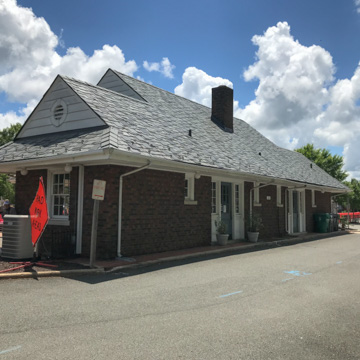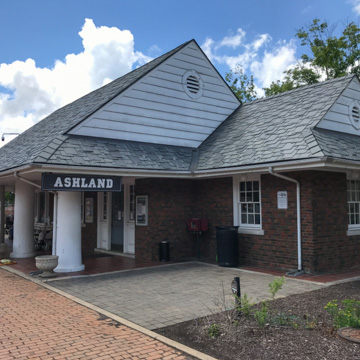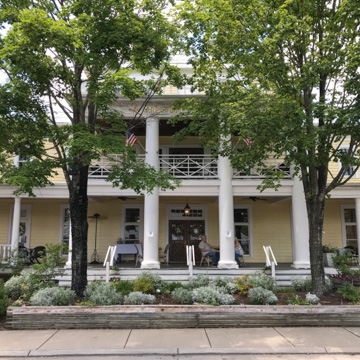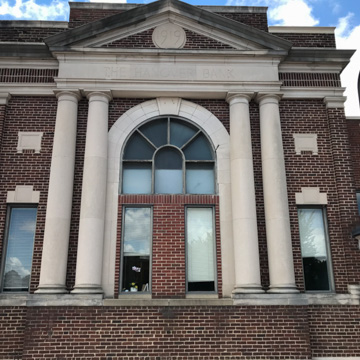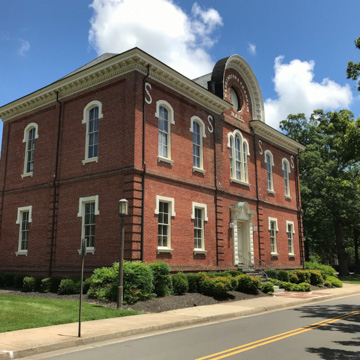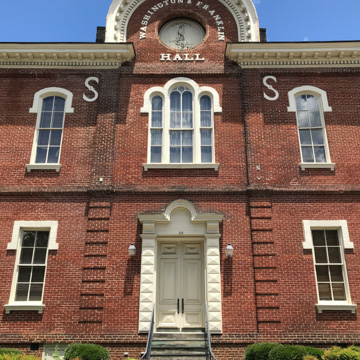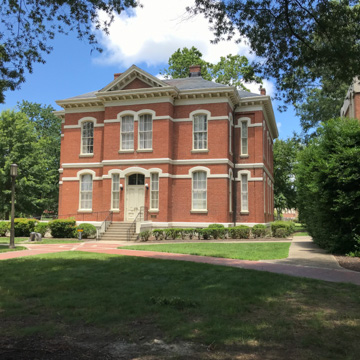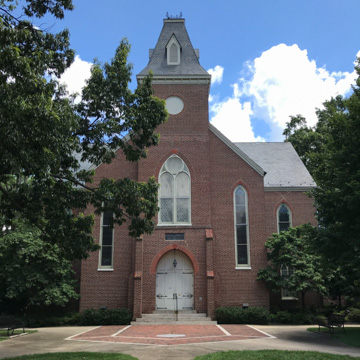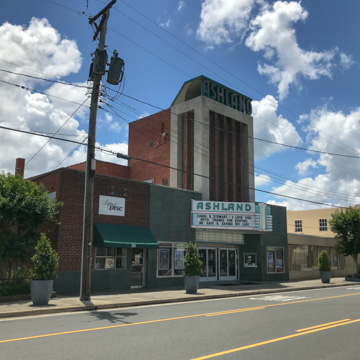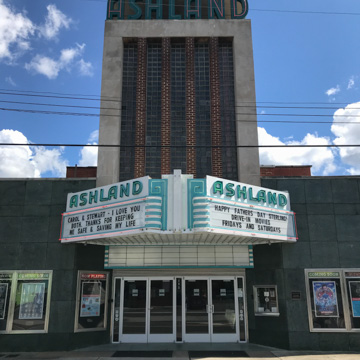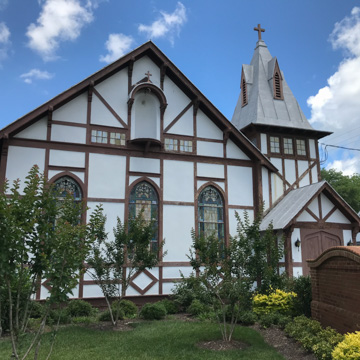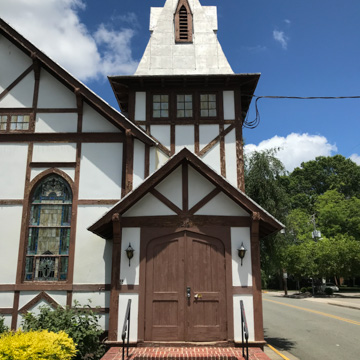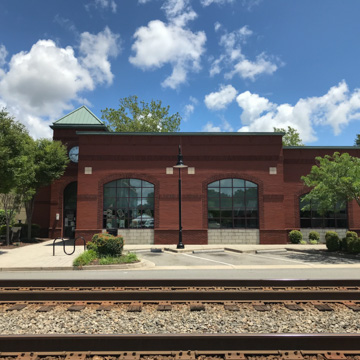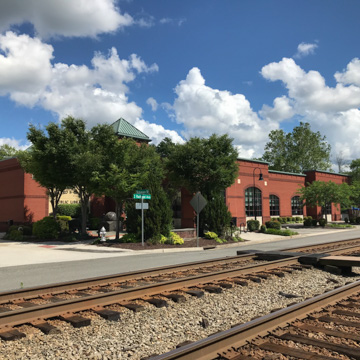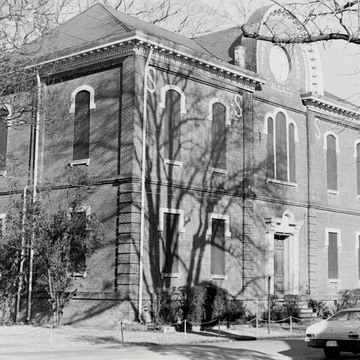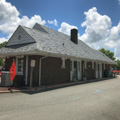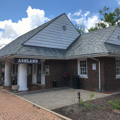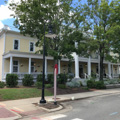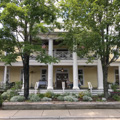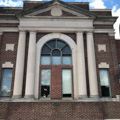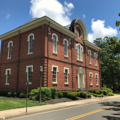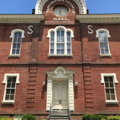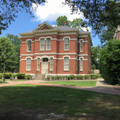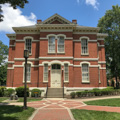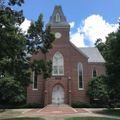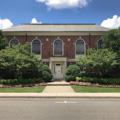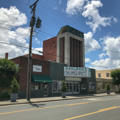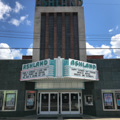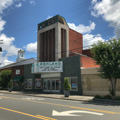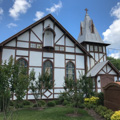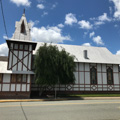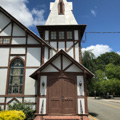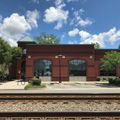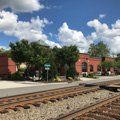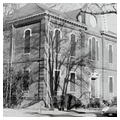Ashland, about twelve miles north of Richmond, was formed around the railroad; the double tracks of the Richmond, Fredericksburg and Potomac Railroad (RF&P) run through the center of town, with Center Street on either side of the tracks. The railroad laid tracks
The Visitors Center and Richmond, Fredericksburg and Potomac Railroad Depot (1922, W. Duncan Lee; 110 North Center Street) is in the center of the road and tracks. Modest in size with a prominent roof, it is in the Colonial Revival idiom. Across from it is the Henry Clay Inn (1992), a re-creation of a hotel of the same name that had burned. Adjacent is the former and modified Hanover Bank Building (1919, Albert F. Huntt; 104 North Center Street), with its four engaged Doric columns.
On the opposite (east) side of Center Street is the campus of Randolph-Macon College. Chartered in 1830, this Methodist men's college invested heavily in Confederate bonds and found itself in financial difficulties after the war. The RF&P Railroad offered land as an inducement if the college would move from Boydton, Virginia. In 1868 the college trustees accepted a former hotel at the northern end of town and moved. By 1871 the college had prospered and had erected, facing the railroad tracks, Washington-Franklin Hall (1871–1872, Benjamin F. Price), a large brick Italianate structure. Impressive, with large, round-arched pediments on its two major facades, the structure served as a literary society for the college. This was followed by the adjacent Italianate structure, Pace Lecture Hall (1876, Albert Lawrence West), a much tamer design, and then, between the two, a joint town-gown chapel, formerly the Duncan Memorial Chapel, now the Old Chapel Theater (1879, Albert Lawrence West), a red brick Gothic Revival structure. These made an impressive High Victorian array along the tracks for all who were traveling either north or south. Twentieth-century additions to the campus have followed, not too surprisingly, in the Colonial Revival mode, with the most important being the former Carnegie Library, now the Peele Administration Building (1922, Edward L. Tilton), designed by a former McKim, Mead and White employee who specialized in libraries.
The former Ashland Theater (c. 1950; 207 England Street) possesses a striking Art Deco tower. Across is the Randolph-Macon College Fine Arts Center (formerly St. Ann's Catholic Church) (1892; alterations, 1925, Luther P. Hartsook; northwest corner of England and Henry Streets), which has half timbering characteristic of the Arts and Crafts movement.
Back on Center Street is the Richard S. Gilles Jr. Public Library (1997, DePasquale Gentil Homme Group and Luckmire Associates; 200 South Center Street), which attempts to pick up the commercial scale of the surrounding context with its strange configuration of a small tower and long horizontal form: a gentle sort of postmodernism.




















